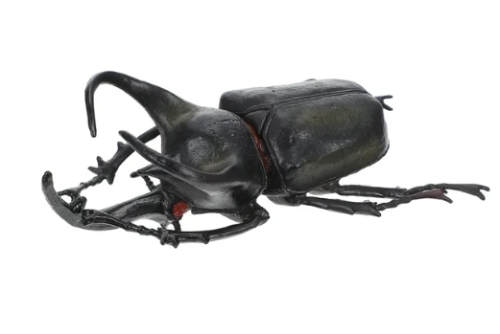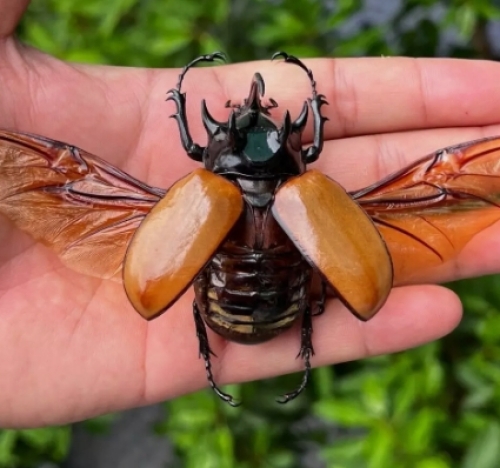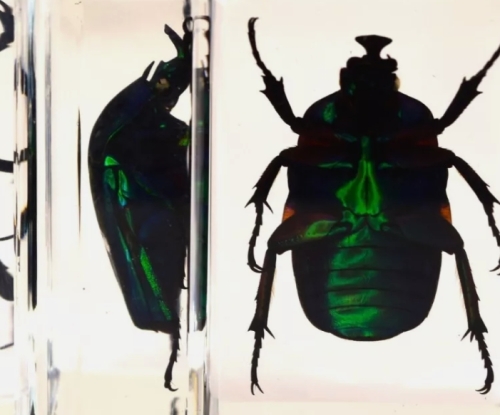A specimen of the rhinoceros is an exquisite work of art showing this magnificent insect. The unicorn beetle, also known as the horned beetle, is known for its prominent front horn and majestic size and is a "giant" in the insect world. Making a specimen of the rhinocerus usually requires careful treatment of the insect, including extermination, drying and immobilization, in order to maintain its original form and color.
The preparation process first involves treating fresh specimens with insecticides to prevent them from rotting. Next, the insects are carefully dried to ensure that all water is removed from their bodies. After drying, the unicorn is attached to a specimen needle and placed in a transparent display case. The display box is designed not only to protect the specimen from the environment, but also to give viewers a clear view of every detail of the unicorn, including its magnificent front horn and exquisite shell.
The specimen is of great value in education and scientific research. They help students and researchers understand the biological characteristics, behavioral habits and ecological roles of the unicorn. In addition, these specimens are often used in museum exhibitions to allow the public to appreciate the magnificence and strangeness of this insect, while raising awareness of insect conservation and ecological diversity.














